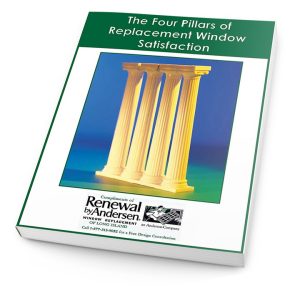MENU


After all the snow and ice we had covering our windows on Long Island this past winter, many of our neighbors are more than ready for summer to finally arrive. With warmer weather – and increased opportunities to head to the beach, relax in the yard or get out and hike in the countryside – our thoughts turn away from snow shovels and early morning workouts clearing the driveway toward exercise routines and healthy meal plans to get us into shape for the season ahead.
Spring is a great time to schedule the annual physical. It’s always a good idea to talk to your doctor before starting a new fitness routine or making significant changes to your diet.
Spring is also the perfect time to put your home through an annual fitness checkup. Without routine maintenance, your home can become less efficient. Normal wear and tear from daily use causes minor damage that will lead to bigger problems if left unattended. The result for Long Island homeowners is often higher utility bills. Just like proper nutrition and exercise will help you shed those extra pounds you gained over the winter, it’s possible to shave several hundred dollars off your annual utility costs by helping your home work more efficiently.
#1 Tame Energy Suckers
Did you know that making your waterbed every day can lower the operating cost by a third? Your blanket or bedcover acts as an insulator to help regulate the water temperature. Not everyone has a waterbed, but there are plenty of other vampire energy suckers in most homes.
Spotting not-so-obvious sources of unnecessary energy drain requires a bit of detective work. For example, did you know that your television will consume more energy over its lifetime while off than while turned on? Only 30 percent of the total consumption occurs while turned on – the other 70 percent goes to keep your TV on perpetual standby so it comes on instantly when you’re ready to watch your favorite program.
Anything that has a power light continually draws energy. Unplug non-essential small appliances when not in use. Centralize your digital charging routine with a power strip so you can turn everything off at the same time.
#2 Schedule Appliance Check-ups
Spring and fall appliance tune-ups keep your appliances in good working order.
#3 Search for Structural Deficiencies
Gaps around windows and doors drain energy and increase your utility bills dramatically. The Natural Resources Defense Council (NRDC) reports window options can reduce heat loss by as much as 50 percent during cold weather months. The NRDC recommendation for homeowners is to replace single-pane windows with double or triple pane windows that meet or exceed ENERGY STAR standards.
Proper insulation in the attic isn’t the only way to save money and control your indoor environment. The American Council for an Energy Efficient Economy (ACEEE) also recommends homeowners insulate pipes and duct work that passes through unheated areas of your home to improve energy efficiency and lower utility bills.
Check for air leaks:
• Around electric outlets
• Window AC units
• Fireplaces
• Vent pipes
• Doors
• Windows
Minor leaks can be remediated with weather-stripping or rope caulk. Damage to exterior siding and fireplaces or chimneys may require hiring a professional contractor.
Then give us a call to schedule a private consultation to discuss the overall health of your windows and patio doors. We’ll help you evaluate the condition and energy-efficiency of your existing windows. Reach us toll-free at (866) 609-5033 or fill in the short form on this page.
Check out this post for more information on replacement window energy efficiency.

Learn Everything You Need to Know BEFORE Buying Replacement Windows